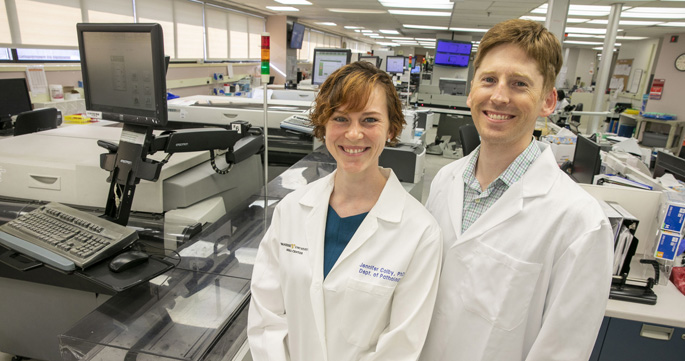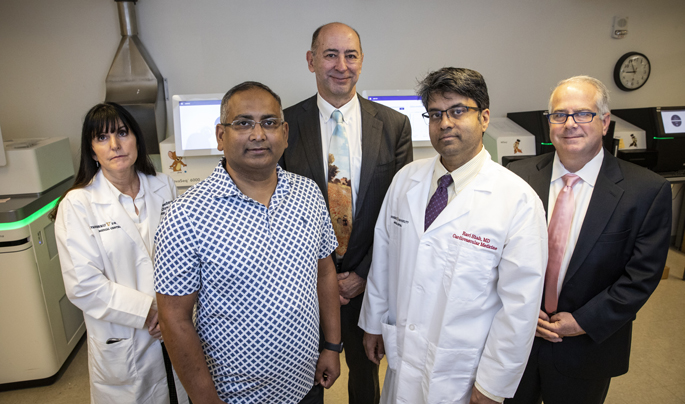
by Paul Govern
Urine screening for illicit drug use is common in health care. Used by clinicians who prescribe pain medications, and sometimes used to guide care in emergency departments, these quick and inexpensive screenings are comprised of assays that test urine for things like cocaine, opioids, amphetamines, cannabinoids, benzodiazepines (used to treat anxiety), barbiturates and certain antidepressants.
Many of these assays, unfortunately, have high false positive rates, potentially eroding trust between patients and health care providers. The false positives are often due to cross-reactivity of these assays with other drugs a patient may be taking for perfectly legitimate reasons. Confirmation testing of positive results can rule out false positives, but this definitive testing takes several days to complete.
In an award-winning study appearing in Clinical Chemistry, Jennifer Colby, PhD, assistant professor of Pathology, Microbiology and Immunology at Vanderbilt University Medical Center and her husband, Jake Hughey, PhD, assistant professor of Biomedical Informatics and Biological Sciences at VUMC, identify 13 previously unknown drug compounds that cause false positive screenings for amphetamines, buprenorphine (an opioid), cannabinoids and methadone.
Drug test manufacturers test for cross-reactivity and include their findings on the package insert, but according to Colby this testing is not subject to any particular standard of thoroughness.
“Clinicians and clinical labs continue to stumble on drugs that cause false positives on these screens and that aren’t noted in the manufacturer’s insert. Even if academic findings of this sort make their way into the laboratory medicine literature, they might never be noted on the package insert,” she said.
Exploiting VUMC’s strengths in biomedical informatics, Colby and Hughey introduce a new method to sort out this issue.
It happens that VUMC’s clinical lab automatically performs confirmation testing for any positive urine drug screens ordered outside the emergency department. Using deidentified medical record data of patients seen at VUMC over a recent five-year period, the investigators assembled a dataset of 40,741 patients who underwent urine drug screening. A single VUMC drug screening involves 10 separate assays and in the study’s dataset the false-positive rates for these various assays ranged as high as 43%.
In the patient medication histories preceding these drug screenings, the investigators found exposures to some 2,027 different active drug ingredients.
They selected for lab validation 13 drug ingredients associated with high false positive rates in their dataset. They spiked drug-free urine samples with these ingredients and put the spiked samples through drug screening. All 13 revealed cross-reactivity of urine drug screening and 12 of the 13 produced false positives.
“We’ve shown that using this simple approach of intersecting lab results and medication exposures on a large scale you can come up with hypotheses for drugs that may be causing false positives,” Hughey said.
The investigators also identified several drug metabolites that cause false positives, again validated using spiked drug-free urine.
As next steps, Colby and Hughey would like to guide implementation of personalized automated clinical decision support for urine drug screenings as VUMC, as well as adapt their method to other clinical lab assays.
The study, which won an Academy Distinguished Abstract Award from the American Association for Clinical Chemistry, was supported in part by the Vanderbilt Data Science Institute and the Vanderbilt Institute for Clinical and Translational Research.















